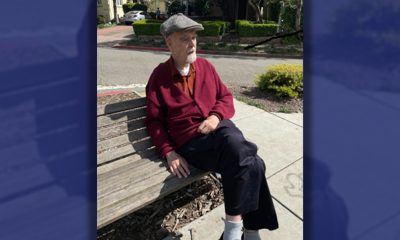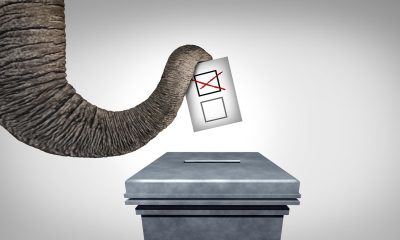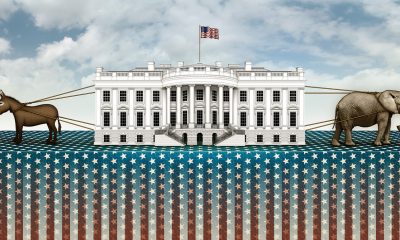Featured
OPINION: When the ‘F’ Word and the ‘N’ Word Meant the Same Thing: Filipino
The insurrectos are very different from the insurrectionists you’ve been hearing about in the news recently. The rioters who attacked Capitol Hill on January 6, were dubbed “insurrectionists” because they were urged to fight and pillage the Capitol based on former Pres. Donald Trump’s lies of a stolen election.
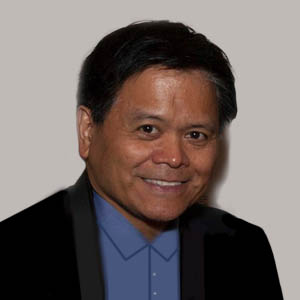
For some of you, to know of the singer H.E.R., the African American Filipino singer from Vallejo who kicked off Super Bowl LV with her rendition of “America,” would be ‘woke’enough.
But the ‘wokiest’ of the woke would appreciate that the game was three days after February 4, the anniversary of the day when the very first gunshots of the U.S.-Philippine War were aimed at Filipinos.
Still the wokiest yet would remember that the Super Bowl was being played in the hometown of one David Fagen, the African American hero of the Filipino “Insurrectos” of 1899.
Fagen knew when the “N” word and the “F” word both meant “Filipino.” For real. Let me explain.
Fagen was an African American born in Florida in 1875, at a time of continuing oppression and discrimination in the South. According to historian Howard Zinn, between 1889-1903 “on average, every week, two Negroes were lynched by mobs—hanged, burned, mutilated.”
This is well after the Civil War, when the best America could do was the 1896 Plessy v. Ferguson case, which made “separate but equal” the law and created what essentially would become an American caste system.
Imagine the mindset of a young Fagen, who joined the segregated, all-Black 24th Infantry as one of the “Buffalo Soldiers” sent to fight Native Americans. Perhaps he was just following orders, but when that deed was done, Fagen and the others were sent to fight in the Spanish American War, first in Cuba, then to Asia.
There they fought the war everyone wants you to forget.
After a brief stop in San Francisco, Fagen shipped off to the Philippines, where things began to fall apart morally when the first gunshots were fired at Filipinos on the aforementioned Feb. 4, 1899.
By then, Fagen had reached his existential WTF moment, and I don’t mean “what the Filipino?” But it might have been.
Fagen questioned how any African American with integrity or empathy could fight a white man’s war and turn his gun on another person of color fighting for freedom.
Maybe his feelings began during his first campaign against Native Americans, but by the second go-round in the jungles of the Philippines, he could no longer fight for the U.S. imperial army. Fagen became one of 15 to 30 deserters among the four units of the all-Black “Buffalo Soldiers.”
Fagen’s distinction: he was the only one known to have actually joined the Filipino freedom fighters of the U.S.-Philippine War.
My friend, Prof. Daniel Gonzales of San Francisco State University’s Ethnic Studies Dept., prefers that naming phrase to the more common Philippine-American War because the U.S. was the aggressor on Philippine soil and caused more deaths. Among Filipino civilians alone, casualties as a result of the war are estimated to be around 1 million lives. Some call it borderline genocide, which is debatable. But there’s no doubt this was America’s imperial war, more deadly than our present-day coronavirus war.
The real insurrectionists
The Filipino freedom fighters were the real “insurrectos,” or insurrectionists in American history; or as I see it, they were the insurrectionists based on truth.
David Fagen had to become one of them when he saw the U.S. was there to subjugate and colonize the Philippines.
The insurrectos are very different from the insurrectionists you’ve been hearing about in the news recently. The rioters who attacked Capitol Hill on January 6, were dubbed “insurrectionists” because they were urged to fight and pillage the Capitol based on former Pres. Donald Trump’s lies of a stolen election. The vast majority of these Trump insurrectionists were white and racist. Once unleashed, they destroyed federal property and threatened the lives of both Mike Pence and Nancy Pelosi. In the end, when all was said and done, five people died.
And when they were done, they were so proud they started taking selfies.
No one was taking selfies in the Philippines.
For the Filipinos, it was a war of passion, often fought with spears and knives to ward off an American desire for domination and conquest fueled by racism.Through letters written by African American soldiers and published in America by the Black ethnic press, such as the Boston Post, the Cleveland Gazette, and the American Citizen in Kansas City, Americans at home learned the truth about just how racist the war was in the Philippines.
“I feel sorry for these people and all that have come under the control of the United States,” wrote Patrick Mason, a sergeant in Fagen’s 24th Infantry, to the Cleveland Gazette. “The first thing in the morning is the “(N-word)”and the last thing at night is the “(N-word).”. . .You are right in your opinions. I must not say as much as I am a soldier.”
This was the power of the ethnic press as described in E. San Juan Jr.’s essay on Fagen, that sources the Willard Gatewood book, “‘Smoked Yankees’ and the Struggle for Empire: Letters From Negro Soldiers, 1898-1902.”
It makes the racist nature of the war clear and provides an understanding for Fagen’s defection. On Nov. 17, 1899, Fagen crossed the line and joined the guerrillas.
Historians note that Fagen was so good as a Filipino freedom fighter, he was promoted to captain on Sept. 6, 1900. Some Filipinos even called him “General Fagen.” His notoriety grew as he clashed on the battlefield with the U.S. military forces, specifically Gen. Frederick Funston. Fagen’s exploits were covered by the New York Times.
The war came to an official end in 1902 after Filipino rebel leaders like Emilio Aguinaldo surrendered beginning in the spring of 1901. But Fagen kept fighting and was never found. He was said to have married a Filipina and gone into hiding in the mountains of Nueva Ecija, on the island of Luzon.
Fagen’s head or a head fake?
San Juan Jr. tells a story of Anastacio Bartolome, who, in December 1901, brought a decomposed head said to be Fagen’s to Bongabong, Nueva Ecija. Bartolome produced other pieces of documentary evidence, like weapons or clothing, but the military didn’t consider it credible, nor did they give Bartolome a reward. San Juan suspects the items may have been stolen and the head could have been someone’s from the Aeta, a black aboriginal tribe. Bartolome may have also been a ruse to throw off Fagen’s pursuers.
Nevertheless, it was the Black press that wrote an obituarywith a sympathetic point of view. On Dec. 14, 1901, The Indianapolis Freeman did not condemn Fagen as a traitor but painted the picture of a man “prompted by honest motives to help a weaker side, and one to which he felt allied by the ties that bind.”
And that’s the oft-forgotten Asian part of Black History Month, where soldiers lie David Fagen found common ground among the dark-skinned Asian freedom fighters in the mountain jungles of the Philippines.
If you’ve never heard of this history, it’s not surprising. It’s one that runs counter to America’s white supremacist narrative.
The birth of colonial mentality
My father, who was born under the American flag in the Philippines a few weeks after the U.S.-Philippine war started, lived in the aftermath, yet probably knew nothing about Fagen. That likely wasn’t taught in his colonized American school, where he learned English well enough to come to America in the 1920s as a colonized American national.
All throughout the discrimination my father faced in the U.S. (anti-miscegenation, lack of opportunities in employment and housing), he found himself in the Black community. But he still was in the throes of colonial mentality. Generally, that’s known as an acceptance of the white narrative, as one ‘goes along to get along’ in society.
It’s a mindset that lingers to this day among many in the large Asian American subgroup of Filipino Americans, more than 4 million strong. It’s the reason I no longer participate in some Filipino American projects that too often discount truth for a more passive, glorified U.S. perspective. Wokeness is not an option for the latter-day colonial minded.
They all could use some of the insight from David Fagen’s history.
He challenged an immoral and imperialistic American war. And he knew right away his connection to other people of color in Asia fighting to be free—the Filipino.
When you lack the nerve to break the bonds of colonial mentality, think of Fagen, who heard the “N” word referring to Filipinos, and knew better.
It’s a lesson worth thinking about all the time, and not just during Black History Month.
Emil Guillermo is a journalist and commentator. Listen to his podcast/vlog, where he talks about Fagen with Prof. Daniel Phil Gonzales on amok.com
Activism
S.F. Black Leaders Rally to Protest, Discuss ‘Epidemic’ of Racial Slurs Against Black Students in SF Public School System
Parents at the meeting spoke of their children as no longer feeling safe in school because of bullying and discrimination. Parents also said that reported incidents such as racial slurs and intimidation are not dealt with to their satisfaction and feel ignored.

By Carla Thomas
San Francisco’s Third Baptist Church hosted a rally and meeting Sunday to discuss hatred toward African American students of the San Francisco Unified School District (SFUSD).
Rev. Amos C. Brown, president of the San Francisco NAACP and pastor of Third Baptist Church, along with leadership from local civil rights groups, the city’s faith-based community and Black community leadership convened at the church.
“There has been an epidemic of racial slurs and mistreatment of Black children in our public schools in the city,” said Brown. “This will not be tolerated.”
According to civil rights advocate Mattie Scott, students from elementary to high school have reported an extraordinary amount of racial slurs directed at them.
“There is a surge of overt racism in the schools, and our children should not be subjected to this,” said Scott. “Students are in school to learn, develop, and grow, not be hated on,” said Scott. “The parents of the children feel they have not received the support necessary to protect their children.”
Attendees were briefed last Friday in a meeting with SFUSD Superintendent Dr. Matt Wayne.
SFUSD states that their policies protect children and they are not at liberty to publicly discuss the issues to protect the children’s privacy.
Parents at the meeting spoke of their children as no longer feeling safe in school because of bullying and discrimination. Parents also said that reported incidents such as racial slurs and intimidation are not dealt with to their satisfaction and feel ignored.
Some parents said they have removed their students from school while other parents and community leaders called on the removal of the SFUSD superintendent, the firing of certain school principals and the need for more supportive school board members.
Community advocates discussed boycotting the schools and creating Freedom Schools led by Black leaders and educators, reassuring parents that their child’s wellbeing and education are the highest priority and youth are not to be disrupted by racism or policies that don’t support them.
Virginia Marshall, chair of the San Francisco NAACP’s education committee, offered encouragement to the parents and students in attendance while also announcing an upcoming May 14 school board meeting to demand accountability over their mistreatment.
“I’m urging anyone that cares about our students to pack the May 14 school board meeting,” said Marshall.
This resource was supported in whole or in part by funding provided by the State of California, administered by the California State Library via California Black Media as part of the Stop the Hate Program. The program is supported by partnership with California Department of Social Services and the California Commission on Asian and Pacific Islander American Affairs as part of the Stop the Hate program. To report a hate incident or hate crime and get support, go to CA vs Hate.
Bay Area
Mayor London Breed: State Awards San Francisco Over $37M for Affordable Housing
On April 30, Mayor London N. Breed announced San Francisco has been awarded more than $37.9 million in funding from the California Department of Housing and Community Development (HCD) as part of the State’s Multifamily Housing Program (MHP). The HCD loan will provide the final funding necessary for development of Casa Adelante – 1515 South Van Ness, a 168-unit affordable housing project located in San Francisco’s Mission District.
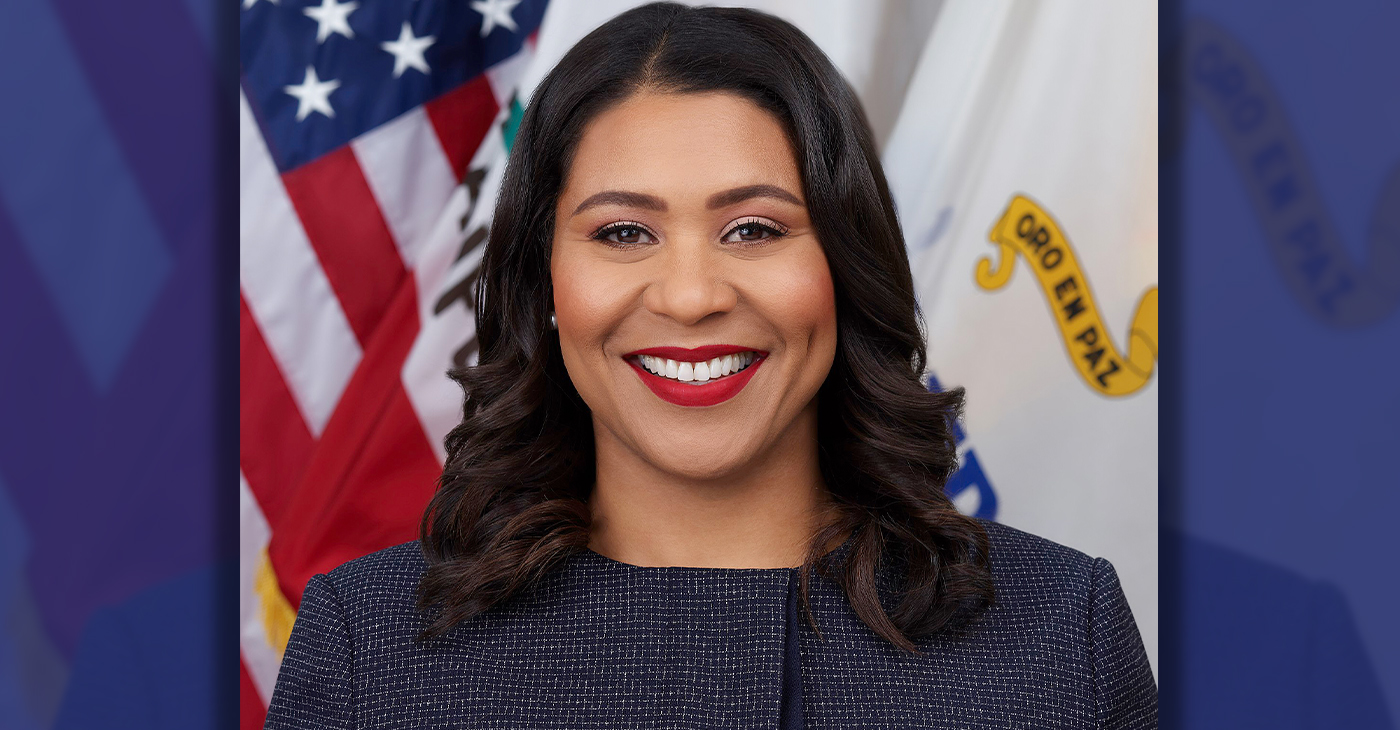
By Oakland Post Staff
On April 30, Mayor London N. Breed announced San Francisco has been awarded more than $37.9 million in funding from the California Department of Housing and Community Development (HCD) as part of the State’s Multifamily Housing Program (MHP).
The HCD loan will provide the final funding necessary for development of Casa Adelante – 1515 South Van Ness, a 168-unit affordable housing project located in San Francisco’s Mission District.
The new development at 1515 South Van Ness Ave. will provide 168 affordable homes to low-income families, formerly homeless families, and persons living with HIV earning between 25-80% of the San Francisco Area Median Income (AMI).
In addition, the project is anticipated to provide family-friendly amenities and ground floor community-serving commercial spaces that preserve the prevailing neighborhood character of the Calle 24 Latino Cultural District.
“This funding unlocks our ability to move on building affordable housing units for families in San Francisco at a crucial time. We understand the level of need for more housing that is accessible, and like the state, the city continues to face a challenging budget cycle,” said Breed. “1515 South Van Ness is a good example of what can be achieved in San Francisco when you have strong community partnerships and an unwavering commitment to deliver on critical needs for our residents.”
“From the beginning of my term as Supervisor, I have fought to bring affordable housing to 1515 South Van Ness” said Supervisor Hillary Ronen. “In the interim, the site has been utilized for homeless services and shelter, and I am thrilled that HCD has recognized the value of this development, and we are finally ready to break ground and bring 168 affordable homes to low income and formerly homeless families in the Mission.”
Owned and occupied by McMillan Electric Company until 2015, the City and County of San Francisco purchased 1515 South Van Ness Avenue in June 2019 with the intent of developing new affordable housing.
In November 2020, the San Francisco Mayor’s Office of Housing and Community Development (MOHCD) released a Multi-site Request for Qualifications (RFQ) seeking qualified developers to build affordable housing on the site, and subsequently selected Chinatown Community Development Corporation (CCDC) and Mission Economic Development Agency (MEDA) in May 2021 to develop the site.
The project is expected to begin construction in winter 2025.
“A strong, long-term push by Mission advocates to make this site 100% affordable is now paying off, with 168 family units that include services and childcare. People of color communities know what they need, and we are excited to be in partnership with a team, consisting of MEDA, CCDC, and MOHCD, that listens,” said Malcolm Yeung, Executive Director at CCDC.
“We are excited to be in partnership with CCDC, yet again, and for the opportunity to develop intergenerational affordable housing in the City’s Mission District,” said Luis Granados, executive director at MEDA.
Increasing housing affordable to lower-income and vulnerable residents is a key priority in the City’s Housing Element which calls for additional funding for affordable housing production and preservation, as well as Mayor Breed’s Housing for All Executive Directive that sets out the steps the City will take to meet the bold goal of allowing for 82,000 new homes to be built over the next eight years.
Tuesday’s funding announcement emphasizes the importance of regional and state collaboration in order to reach our housing and climate goals.
“We are thrilled—not just to bring a project of this size to a community with great need — but to do so with community-based developers and their partners who understand the neighborhood and sensitivities around cultural preservation,” said HCD Director Gustavo Velasquez.
Community
Opening Soon: Vibe Bistro Is Richmond’s New Hub for Coffee, Cuisine, Community and Culture
Vibe Bistro, located at 1503 MacDonald Ave., Suite B, Richmond, CA, is announcing its grand opening week, May 21-26, 2024. The café will be a hub where people can come together to enjoy coffee, cuisine, community, and culture, according to the establishment’s owner, Free Brown.
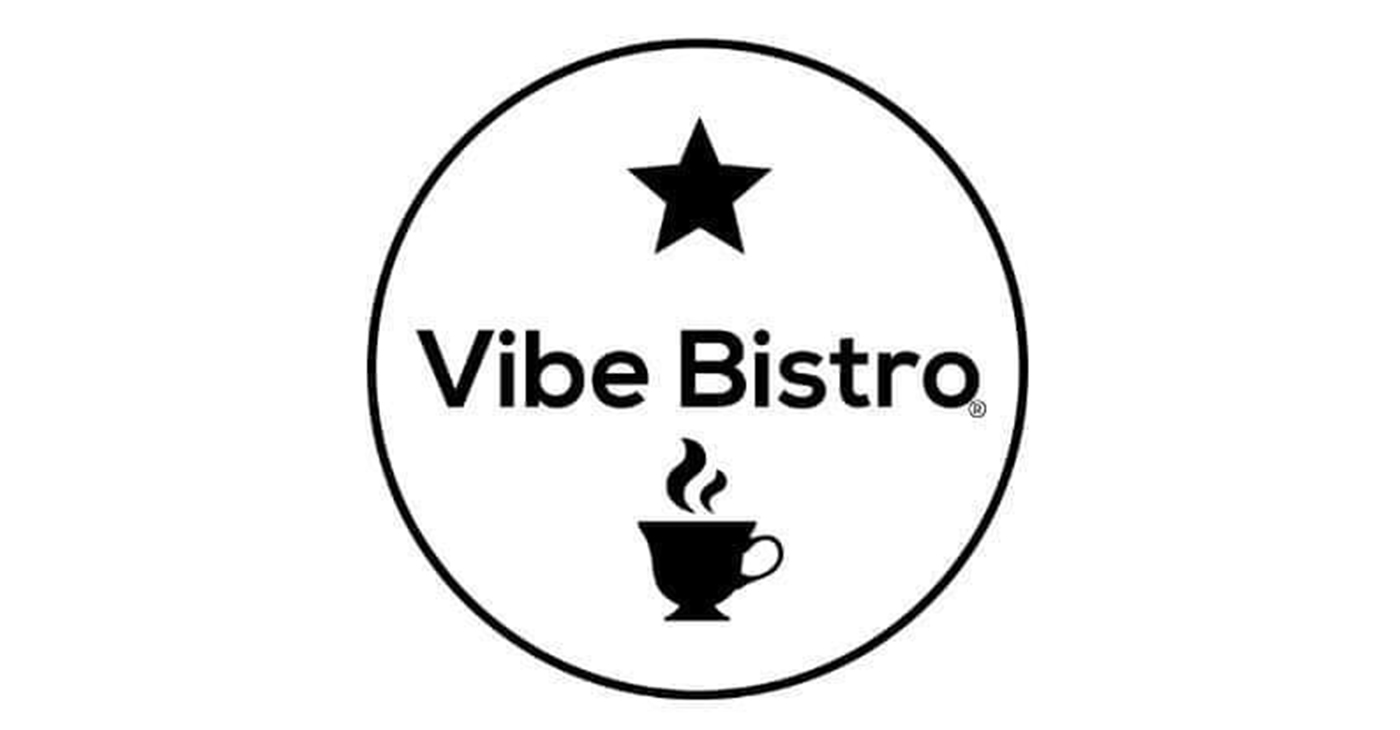
By Y’Anad Burrell
Vibe Bistro, located at 1503 MacDonald Ave., Suite B, Richmond, CA, is announcing its grand opening week, May 21-26, 2024.
The café will be a hub where people can come together to enjoy coffee, cuisine, community, and culture, according to the establishment’s owner, Free Brown.
“Vibe Bistro is Richmond’s neighborhood haven for soulful coffee, delicious food, and vibrant experiences. Vibe Bistro is not just a coffee shop; it’s a place where ‘coffee meets community” says Brown.
It occupies the space formerly known as the Richmond Food Hall, which was also the former location of OakStop Richmond.
During the grand opening week, folks are invited to join in celebrating the spirit of community. From Tuesday, May 21, Vibe Bistro will be open from 6 a.m. to 2 p.m. on weekdays, serving specialty coffees, convenient grab-n-go options, and delicious breakfast and lunch selections.
The official ribbon-cutting ceremony will be held on Thursday, May 23, from noon to 2 p.m., followed by surprise festivities that the owners say you will need to experience in-person to fully enjoy.
Vibe Bistro’s art exhibition opens May 23, through Sunday, May 26. It features a special artist talk led by renowned curator Jowhari Trahan, a story on glass, and a mural unveiling by Richmond’s own Nakari Syon.
Additionally, the community is invited to immerse themselves in artistic expression throughout the week with art and craft classes.
Get ready for ‘Feature Fridays’ at Vibe Bistro, where they will showcase the culinary creations of local food businesses. This initiative is not just about food, it’s about fostering a spirit of collaboration and community.
All local businesses are invited to be part of this exciting journey, says Brown.
For more information, visit www.VibeBistro.com, sign up for the newsletter to stay connected, and follow all social media platforms at @TheVibeBistro.
-

 Community3 weeks ago
Community3 weeks agoFinancial Assistance Bill for Descendants of Enslaved Persons to Help Them Purchase, Own, or Maintain a Home
-

 Activism4 weeks ago
Activism4 weeks agoOakland Post: Week of April 3 – 6, 2024
-

 Business3 weeks ago
Business3 weeks agoV.P. Kamala Harris: Americans With Criminal Records Will Soon Be Eligible for SBA Loans
-

 Activism3 weeks ago
Activism3 weeks agoOakland Post: Week of April 10 – 16, 2024
-

 Community3 weeks ago
Community3 weeks agoAG Bonta Says Oakland School Leaders Should Comply with State Laws to Avoid ‘Disparate Harm’ When Closing or Merging Schools
-

 Community2 weeks ago
Community2 weeks agoOakland WNBA Player to be Inducted Into Hall of Fame
-

 Community2 weeks ago
Community2 weeks agoRichmond Nonprofit Helps Ex-Felons Get Back on Their Feet
-

 Community2 weeks ago
Community2 weeks agoRPAL to Rename Technology Center for Retired Police Captain Arthur Lee Johnson

